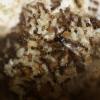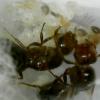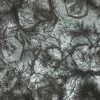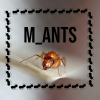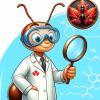I saw this thread and had to reply that I have seen from observations that mold may not be as bad as most of us think, or may not be bad at all.
I had a Camponotus Pennsylvanicus I was waking up from hibernation. There was a green colored mold that appeared to consume some of the workers. I was sure that the covered workers were dead and that I would lose the colony. What I saw and got a video of was an awake worker coming over and cleaning the mold off of a "consumed" worker. After a couple of days of be awoken from hibernation, the colony was fine. I may have lost a couple of workers, but the mold had no noticable effect, other then the workers cleaning it up and discarding it. I have seen workers clean up mold on several different occasions.
Who knows, some molds may be helpful. Maybe some of the ants will eat the mold, or there may be a symbiotic relationship. Maybe certain types of mold are bad and others good. Or, maybe if there is too much mold, it may decompose and take all the oxygen in an unventilated nest.
Either way, I have not seen or read how mold effects ants in a non-perlite nest. I only know what i have seen in my nests, and I question the assumption of Mold = bad.



